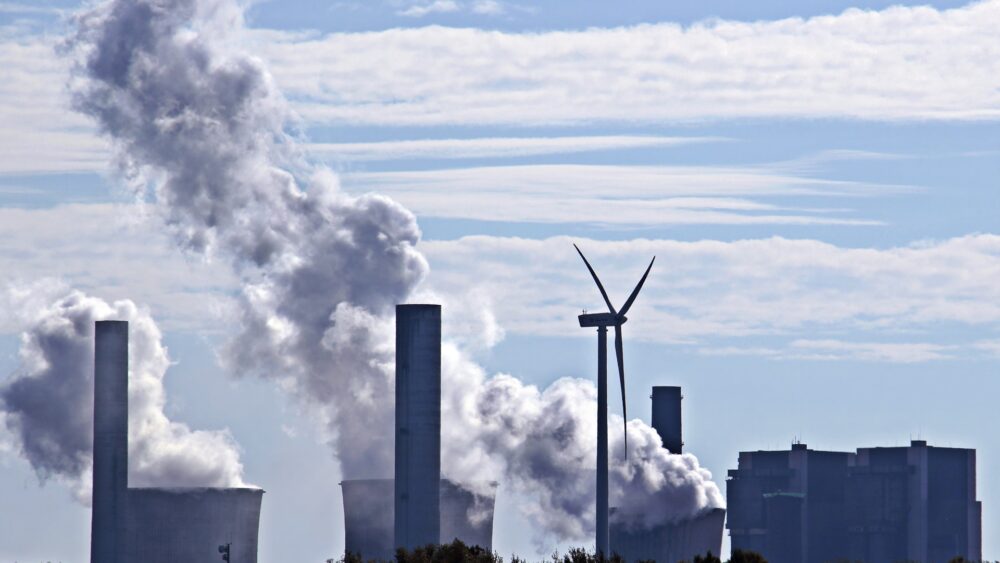Introduction
– The global transition away from fossil fuels is a “two steps forward, one step back” process. Although a non-linear phenomenon, subject to temporal recessions, regional variables and facing the challenge of a rapidly rising global energy demand, the transition is well in progress and its advancements are quantifiable.
– The transition away from fossil fuels is also one towards renewable sources of energy. As such, it entails geopolitical challenges, risks and opportunities similar in nature to those which accompanied previous energy transformations.
The premise of the inevitability of doing away with fossil fuels is already shaping long-term strategies of fuel importing and exporting states alike. The cross-dependencies resulting from this emerging new energy security landscape will to a large extent define the geopolitics of the next several decades.
Between the years 2009 and 2019, the share of renewable energy sources (RES) in global energy generation was increasing by about 5% per year[1], compared with an average of 1.7% growth for fossil fuels in the same period.[2] The share of renewables in satisfying national energy demand has been rising in the past years, reaching the levels of about 12%, 20% and 26% for the US[3], EU[4] and China[5] respectively. Renewables are on the path to overtake coal to as the world’s primary source of electricity generation worldwide by 2025.[6] At the same time, and in spite of widespread support for “green recovery” to address the COVID-19 crisis, national recovery packages included investments in fossil fuels worth about six times the amounts allocated therein to renewables.[7] Crucially, however, these values and numbers should be looked at through the lens of the rapidly growing global demand for energy, the meeting of which will remain a strategic priority for national economies, higher on the agenda than their domestic and international commitments to cut GHG emissions. This realization is central to understanding the paradox lying in the fact that certain countries, while doubling-down on the green energy transition, are at the same time adding hundreds of GW of coal power to their power grids every year (think China or Indonesia, but also Germany). Such decisions fuel accusations of hypocrisy against the governments of such states, but a closer look at this phenomenon unveils a nuanced picture.
While today’s projections – which are based on the quantification of global commitments to climate policies – make it difficult to assess the chances for reaching the goals of the global climate agenda, the estimations as to the future share of clean energy in the global energy mix are more easily determinable. If the presently observed trends continue, up to about 300 GW of solar[8] and 160 GW of wind energy[9] will be added, and between 50 and 70 million EVs[10] will be produced worldwide every year by 2040. The value of the green energy industry has in 2018 equalled that of fossil fuels, and is on track to represent up to 10% of the global market value already by 2030.[11] If the current pace of progression of the green economy continues, then the critical minerals market alone is predicted to outvalue the fossil fuels industry by 2040.[12] Although it faces numerous known and yet to be known obstacles, the global economy’s transitioning away from fossil fuels and towards clean energy is now a process well underway.
The implications of the global green energy transition exceed beyond the energy sector, and the disruptive nature of the process considerably impacts the geopolitical status quo. At the same time, the existing analyses of this transformation tend to assume its specific temporality and focus on the “before” as opposed to what comes “after” the era of fossil fuels. Such an approach can be especially misleading, given that the advancing transformation does not operate on a one-dimensional timeframe. Measuring this transformation is also problematic considering its non-linear progression in different regions, making its assessment prone to subjectivity and error. Energy transitions can be “messy, conflictual, and highly disjointed processes”[13] which often resemble a dynamic equilibrium (or the lack thereof) rather than a line on a graph. Therefore, in order to avoid falling into the trap of assuming a limited temporality of the ever-accelerating green energy transition, the focus should be on the transformative process itself and its continuous impact on the global balance of power. A geopolitical analysis should focus on identifying the direct and indirect results, as well as new relationships of interdependence which spring from the transition itself and the mitigation efforts of the impact of climate change. Guided by this assumption, this text identifies six fundamental geopolitical considerations, which – depending on the subject and interests involved – entail risks, challenges and opportunities for various stakeholders of the green energy transition.
Risks, challenges and opportunities in transitioning away from fossil fuels
First, energy needs and policies adopted to meet them will increasingly vary among nations. Over the past two decades, energy consumption decreased where economic growth was slow but energy efficiency figured high on the agenda. The EU states (combined) consume today about 5% less energy than they did in 2000.[14] This decrease has reached 15% in Japan, 20% in Canada, and has remained largely flat in the USA[15]. In the same period, however, primary energy use has doubled in India and the Middle East, and nearly tripled in central Africa and China, causing an overall 40% increase in the global energy use.[16] It comes then as no surprise that non-OECD countries will account for 70% of the global energy demand by 2040.[17] Meeting this nearly exponential demand growth without compromising the global climate agenda will require yearly investments in the range of $100bn+ to expand renewable energy in developing economies alone, with most of it in need of being financed with foreign capital[18]. The question of who and how will provide funding and technology to meet this growing demand is increasingly important, not least to the success of the global climate agenda. The outcome of the emerging international rivalry around this issue is likely to determine who will control many of the most important supply chains of tomorrow: some of the world’s least developed states are home to most critical minerals needed in clean technologies, and at the same time are in need of developing their renewable sectors.
Second, the import-export relationships between states producing and consuming energy is evolving due to the geographically dispersed deployment structure of the RES technologies. The ownership of low-carbon technology lies today primarily in the hands of the OECD members and China[19], which also invest most in green tech research and development[20]. The extraction of critical minerals needed to produce these technologies is concentrated, often to extreme extents[21], in countries different to those that have up until now been satiating the global demand for fossil fuels[22]. Moreover, the service of processing raw minerals to make them fit for use in hardware is itself concentrated in only just a handful of countries today, notably in China[23]. The cocktail of all of these factors combined results in a far more complex web of stakeholder cross-dependencies than the one which has underpinned the fossil fuel-reliant global economy. The reconfiguration of the global supply chains of energy, rendered inevitable by the emerging new landscape of connections in the realms of energy production, transport and distribution risks to revive the neo-colonial relation structures between the countries of the Global North and South. Being important and far-reaching phenomena in their own right, the challenges related to the growing demand for critical minerals and the risk of renaissance of quasi-colonial relationships will be addressed at length in a separate instalment of our ClimeNous series.
Third, the risk of energy impoverishment in the green transition process may, if materialized, introduce unprecedented dependence of some states on foreign energy supply. In a global economy relying primarily on oil, gas and coal for its energy needs, the world has seen many times how governments use their control over the direction of flows of fossil fuels to exert influence over countries relying on fuel imports. While progressively dethroning fossil fuels, the green economy is endowing certain nations with new leverages over their neighbours and even geographically remote competitors. Carbon pricing via taxes and emissions trading systems (ETS) constitute one such example. Under the EU’s ETS scheme, emissions price has gone from appr. EUR 8/ton in 2018 to over EUR 50/ton, and its rise is expected to continue. This is several times the current price of such allowances available under China’s ETS[24], launched in 2021 after several years of pilot regional projects and already the world’s largest[25]. While an imposed pricing rule of this kind is usually identically binding for the entities operating within the concerned market – which, in case of the EU, encompasses a number of countries – a rising price for carbon consumption affects the individual situations of industries and national economies to varying degrees. As for the states, those where coal plays a major role in the national energy mix, the pace at which the price of emission allowances is rising increases the risk of unaffordability of energy at a time when renewables are decades away from becoming default energy sources. Such countries are then left with little choice but to procure themselves overly expensive energy to satisfy their ongoing energy needs, all the while pursuing an unprecedentedly costly green transformation. The risk of facing energy gaps which this situation entails for such states increases the relevance of natural gas and other low(er)-emission fuels in reaching Europe’s climate goals. It also affects the political conjuncture around energy infrastructure projects, whether they be of up-, mid-, or downstream type, the utility of which is now measured no longer solely against the availability of a given energy resource, but more importantly against their compatibility with the pursued climate agenda and long-term economic viability.
Fourth, the accommodation of the green energy transition by states dependent on revenues from fossil fuels does not change their fundamental strategic interests. The majority of the world’s largest exporters of fossil fuels are also states with some most geopolitically intricate geographies. Their often expansionist policies, rendered possible by the steady streams of revenues from such exports and the fact alone that they control the flows of such critical resources, constitute tools shaping regional, and at times global, balances of power. While the world is unlikely to ever do away entirely with fossil fuels[26] and the prospect of the low-carbon global economy is decades away, states whose treasuries have thus far relied on exports of hydrocarbons to fill up their coffers are actively anticipating the emerging carbon-hostile green economy. National strategies vary across the spectrum; Saudi Arabia, for instance, intends to “raise the share of non-oil exports in non-oil GDP from 16% to 50%”[27] and reach 50% renewables target by 2030[28], whereas Russia announced to focus on LNG and blue hydrogen production (i.e. hydrogen made of natural gas)[29]. The pace and forms of these and other strategies of hydrocarbon-exporting states will evolve depending on the geopolitical conjuncture underpinning global markets and the climate agenda. Their eventual shape will be the consequence of choices made by governments to address both existing and emerging challenges to national interests, particularly those resulting from the geographic location of such states, through means compatible with the market reality of a global economy bent on decarbonisation.
Fifth, the transition process creates new political space within which states will be competing for gains in their overall national power potential. The above-mentioned rise in relevance of natural gas as a transition fuel on the path towards low-carbon economy is in this regard a case in point. Germany has betted heavily on the potential of its renewables sector when it decided to close its nuclear powerplants at risk of a national energy gap. As a result, coal – which it is said to phase out by 2038[30] – has ironically overtaken wind as Germany’s primary source of electricity[31]. More importantly still, reaching Germany’s climate policy goals without resorting to nuclear energy will require Berlin to import increasingly high volumes of gas. This, above all, was the rationale behind Germany’s steadfast support for the Nord Stream 2 project. This new double-pipe conduit will significantly raise the quantities of gas received directly from Russia, and thus expand the latter’s toolbox of instruments allowing it to influence European geopolitics. It also gives Gazprom the upper hand over American LNG exporters, whose hopes to seize the chance created by the pandemic-related supply disruptions and finally get a foot in the door of the European gas market will likely remain unfulfilled. In Europe alone other similar conundrums include quarrels over whether nuclear energy and non-green hydrogen (i.e. one that is not produced from renewable energy) should be included in the EU taxonomy (i.e. EU’s incoming classification system for environmentally sustainable investing). Principally a French-German dispute, the question of the place of nuclear in the taxonomy may determine investment and energy choices in Europe and beyond. Its exclusion from the EU list would likely mean an additional boost for investments in German-produced RES technologies; its inclusion, on the other hand, would reassure those countries which rely on nuclear, possibly via French or American technology, for reaching their defined climate goals. In case of hydrogen, the issue is whether the countries where the RES sector is still in its early days and which are highly reliant on fossil fuels will be able to produce it with low-emission (but not renewable) fuels, especially natural gas. As it may take decades before many European countries will be able to produce green hydrogen in commercially viable quantities[32], a limitation of the taxonomy to cleanest hydrogen only may strengthen Germany’s expansionist green industry at the expense of those hindered elsewhere in Europe.
Sixth, reacting to the climate crisis is only one of the motivations for transitioning away from fossil fuels . While resourcefulness in fossil fuels translated in the past directly into geopoliticalinfluence of certain nations, the currently ongoing green energy transition is already disrupting this trend. So far, many hydrocarbon-rich countries have enjoyed the freedom to employ fossil fuel rents to develop and prosper, unmoved by repetitive announcements of an incoming peak demand[33]. However, even absent anthropogenic climate change, the estimates as to for how long could the world continue to rely on non-renewable fuels indicate that a global transition to renewables sources of power would most likely in any case become inevitable in the XXI century.[34] Overall, the pursuit of the decarbonization is the resultant of the acknowledged need to mitigate climate change, the anticipated exhaustion of the Earth’s embedded fossil resources[35], as well as of the sum total of the economic and political opportunities which the deep-restructuring of the global economy might bring for the transition’s proponents. The urgency of climate action amassed the global push responsible for the current prosperity of the green economy, thus precipitating what otherwise would later in all likelihood need to become a default policy orientation. In the long run, probably extending beyond XXI century, the forecasted depletion of fossil fuels looms large over export-dependent economies. As such, it constitutes an independent source of motivation to pursue the green transformation.
The considerations provided above do not delineate the definitive scope of the discussion at hand. Rather, they should be seen as focal points in the geopolitics of energy transition which governments and industries cannot but integrate into their long-term strategies. The next instalment in our series will provide further insights on this matter.
[1] REN21. 2021. “Renewables 2021 Global Status Report”, p. 13, 33, https://www.ren21.net/reports/global-status-report/
[3] U.S. Energy Information Administration. 2021. “The United States consumed a record amount of renewable energy in 2020”, https://www.eia.gov/todayinenergy/detail.php?id=48396#
See also International Renewable Energy Agency. 2021. “Renewable Energy Statistics 2021”, p. 414, https://irena.org/publications/2021/Aug/Renewable-energy-statistics-2021
See also U.S. Energy Information Administration. 2021. “The United States consumed a record amount of renewable energy in 2020”, https://www.eia.gov/todayinenergy/detail.php?id=48396#
[4] Eurostat. 2020. “Renewable energy statistics”, https://ec.europa.eu/eurostat/statistics-explained/index.php?title=Renewable_energy_statistics
See also Eurostat. 2021. “Renewable energy largely spared from pandemic effects”, https://ec.europa.eu/eurostat/web/products-eurostat-news/-/ddn-20210629-1
See also International Energy Agency. 2020. “European Union 2020”, p. 14, https://www.iea.org/reports/european-union-2020
[5] China Energy Portal. 2021. “2019 electricity & other energy statistics (preliminary)”, via https://chinaenergyportal.org/en/2019-electricity-other-energy-statistics-preliminary/
See also International Renewable Energy Agency. 2021. “Renewable Energy Statistics 2021”, p. 158, https://irena.org/publications/2021/Aug/Renewable-energy-statistics-2021
[6] International Energy Agency. 2020. “Renewables 2020: overview”, https://www.iea.org/reports/renewables-2020?mode=overview
[7] Turk, D.; Kamiya, G. 2020. “The impact of the Covid-19 crisis on clean energy progress”. International Energy Agency, https://www.iea.org/articles/the-impact-of-the-covid-19-crisis-on-clean-energy-progress
[8] International Energy Agency. 2021. “The Role of Critical Minerals in Clean Energy Transitions”, p. 55.
[11] FTSE Russell. 2018. “Investing in the global green economy: busting common myths”, https://content.ftserussell.com/sites/default/files/research/fr_investing_in_the_global_green_economy.pdf?_ga=2.2437301.443003715.1633101333-1935563774.1633101333
[12] International Energy Agency. 2021. “Press release: Clean energy demand for critical minerals set to soar as the world pursues net zero goals”, https://www.iea.org/news/clean-energy-demand-for-critical-minerals-set-to-soar-as-the-world-pursues-net-zero-goals
[13] Sovacool, B. K. 2016. “How long will it take? Conceptualizing the temporal dynamics of energy transitions”. Energy Research & Social Science 13: 202-215, p. 205.
[14] Berdysheva, S.; Ikonnikova, S. 2021. “The Energy Transition and Shifts in Fossil Fuel Use: The Study of International Energy Trade and Energy Security Dynamics”. Energies 14 (5396), p. 1.
[16] Id., p. 2.
[17] International Energy Agency. 2018. “World Energy Outlook”, p. 180.
[18] Goldthau, A. 2020. “The Global Energy Transition and the Global South”. In The Geopolitics of the Global Energy Transition edited by M. Hafner and S. Tagliapietra, p. 334.
[20] Id., p. 324.
[21] Some of the critical minerals needed for the global green transition to succeed are extracted primarily in some of the least developed countries. A case in point is the Democratic Republic of Congo, which provides today 70% of the global supplies of cobalt. See: International Energy Agency. 2021. “The Role of Critical Minerals in Clean Energy Transitions”, p. 12.
[22] Goldthau, A. 2020. “The Global Energy Transition and the Global South”. In The Geopolitics of the Global Energy Transition edited by M. Hafner and S. Tagliapietra, p. 324.
[23] International Energy Agency. 2021. “The Role of Critical Minerals in Clean Energy Transitions”, p.13.
[24] Argus Media. 2021. “China ETS: Emissions prices, volumes hit new record low”, https://www.argusmedia.com/en/news/2250672-china-ets-emissions-prices-volumes-hit-new-record-low
[25] See International Energy Agency. 2020. “China’s Emissions Trading Scheme”, https://www.iea.org/reports/chinas-emissions-trading-scheme
[26] See International Energy Agency. 2021. “Net Zero by 2050: A Roadmap for the Global Energy Sector”, https://iea.blob.core.windows.net/assets/beceb956-0dcf-4d73-89fe-1310e3046d68/NetZeroby2050-ARoadmapfortheGlobalEnergySector_CORR.pdf
[27] Saudi Vision 2030. 2016. Available at: https://www.vision2030.gov.sa/v2030/overview/, p. 60.
[28] Saudi Green Initiative. Available at: https://www.saudigreeninitiative.org/targets/renewable-energy/.
[29] See IFRI. 2019. “Russia’s Energy Strategy-2035: Struggling to Remain Relevant”, https://www.ifri.org/en/publications/etudes-de-lifri/russieneireports/russias-energy-strategy-2035-struggling-remain
[30] Commission on Growth, Structural Change and Employment. 2020. Act to Reduce and End Coal-Powered Energy and Amend Other Laws, via https://www.loc.gov/item/global-legal-monitor/2020-08-31/germany-law-on-phasing-out-coal-powered-energy-by-2038-enters-into-force/
[31] Destatis. 2021. “Press release #429: Electricity production in the 1st half of 2021”, https://www.destatis.de/EN/Press/2021/09/PE21_429_43312.html
[32] See International Energy Agency. 2019. “The Future of Hydrogen”, https://www.iea.org/reports/the-future-of-hydrogen
[33] International Renewable Energy Agency. 2019. “A New World: The Geopolitics of the Energy Transition”. Global Commission on the Geopolitics of Energy Transformation, https://www.irena.org/publications/2019/Jan/A-New-World-The-Geopolitics-of-the-Energy-Transformation
[34] See Ritchie, H. 2017. “How long before we run out of fossil fuels?”,p. https://ourworldindata.org/how-long-before-we-run-out-of-fossil-fuels
See also International Renewable Energy Agency. 2018. “Global Energy Transformation: A roadmap to 2050”, https://www.irena.org/-/media/Files/IRENA/Agency/Publication/2018/Apr/IRENA_Report_GET_2018.pdf
[35] International Renewable Energy Agency. 2018. “Global Energy Transformation: A roadmap to 2050”, https://www.irena.org/-/media/Files/IRENA/Agency/Publication/2018/Apr/IRENA_Report_GET_2018.pdf

IF YOU VALUE THE INSTITUTE OF NEW EUROPE’S WORK, BECOME ONE OF ITS DONORS!
Funds received will allow us to finance further publications.
You can contribute by making donations to INE’s bank account:
95 2530 0008 2090 1053 7214 0001
with the following payment title: „darowizna na cele statutowe”

































Comments are closed.